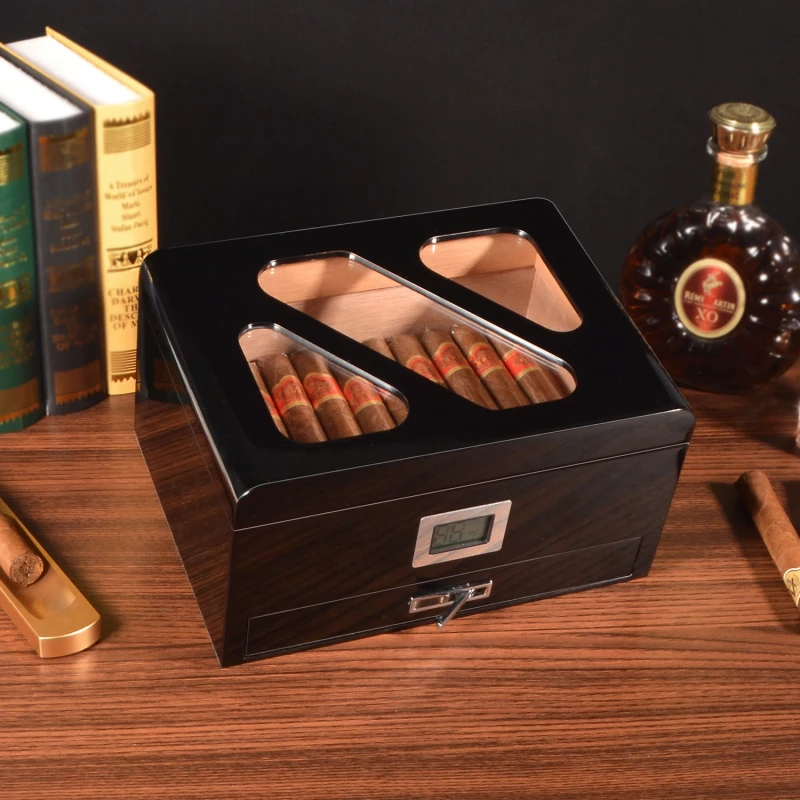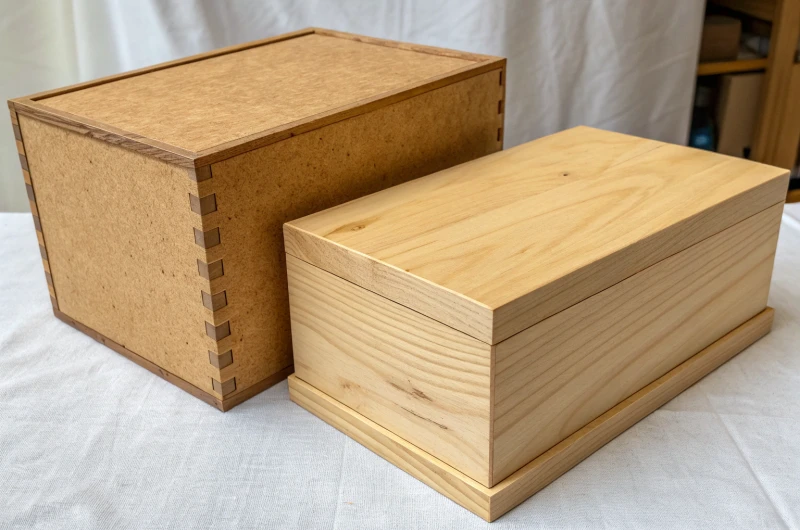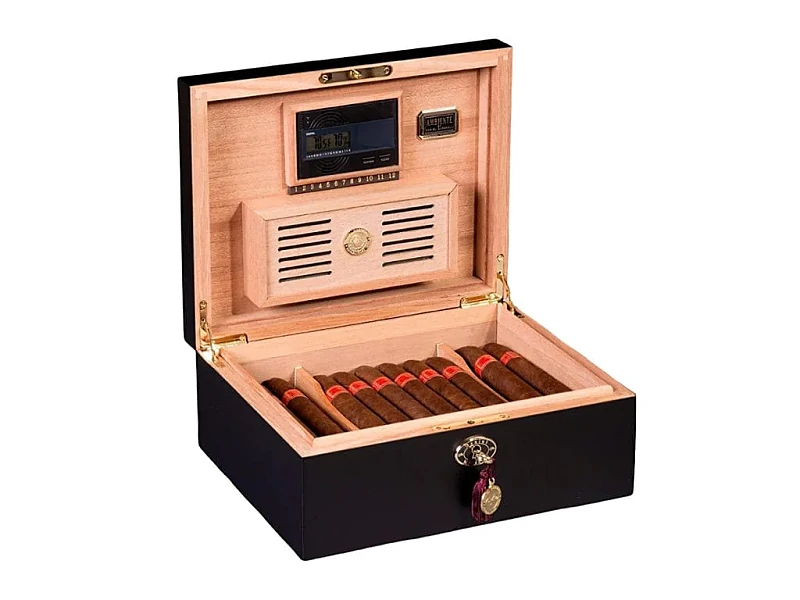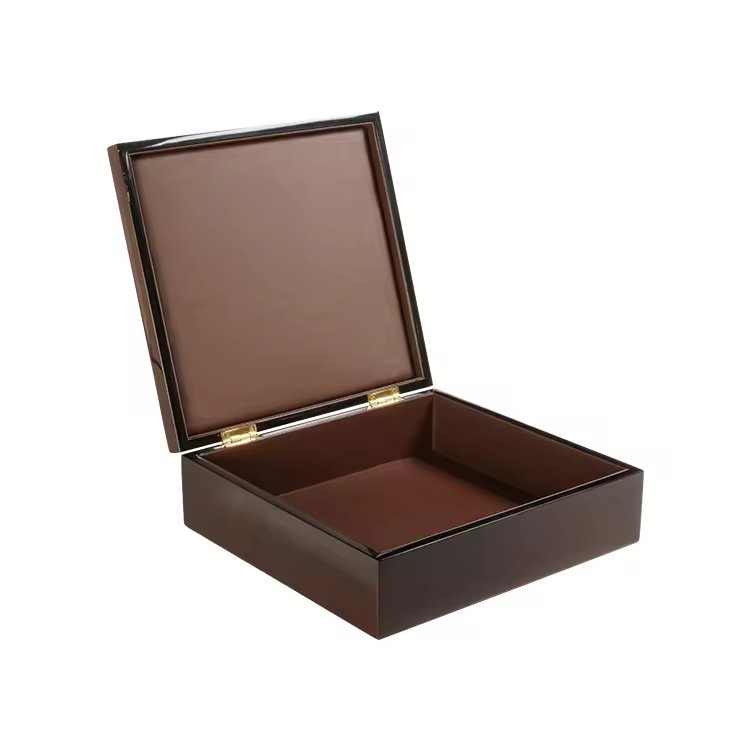
Cigar box projects often fail not because of production capacity but because sampling is incomplete.
Yes, a three-stage sampling process is often necessary, especially for luxury cigar boxes, because it validates structure, finishing, and branding separately to prevent costly errors.
By dividing the sampling process into clear stages, both supplier and client save time and money. Let’s break it down step by step.
Why is a structural sample critical to confirm size, joints, and functional reliability first?
Skipping structure checks is like building on sand.
A structural sample ensures box dimensions, joints, and functions are correct before any surface finishing, which avoids waste and redesign later.

In my experience, most cigar box projects start with excitement about the glossy finish or luxury logo. But if the structure is wrong, all that effort is wasted. The structural sample is the skeleton. It confirms length, width, depth, and wall thickness. It verifies whether the lid opens smoothly, whether the hinges align, and whether the internal divider matches the cigar size.
I once worked on a humidor project where the client insisted on skipping the structural sample and going straight to finishing. After the first round, we realized the interior divider was too narrow for their specific cigar diameter. We had to remake everything, losing both material and weeks of time. Since then, I always insist on a structural sample.
Key Checks in a Structural Sample
- Dimensions: Internal and external, with tolerance under ±1mm.
- Joints: Corners and lid alignment.
- Hardware fit: Hinges, magnets, or clasps must work smoothly.
- Funktion: Lid closes evenly, box stands level.
By confirming structure first, we create a reliable foundation. Once this stage is passed, finishing becomes efficient instead of risky.
How can a finishing (craft/visual) sample validate surface treatment, colors, and luxury feel?
Luxury buyers do not just want strong boxes — they want beauty.
A finishing sample validates surface treatments like piano paint, veneer, or leather wrapping, ensuring the final look matches the brand’s luxury standards.

Cigar boxes are more than storage. They are symbols of prestige. This is why finishing plays such a critical role. The finishing sample focuses on the look and feel: gloss level, color accuracy, texture, and polish depth. For high-gloss lacquer, I test how the reflection looks under bright light. For veneer, I check grain direction and smoothness. For PU leather wrapping, I inspect stretching and corner folding.
I remember one client from Switzerland who wanted a deep-black piano finish. Without a finishing sample, we would have gone into mass production with the wrong tone — closer to charcoal gray than black. The sample allowed us to correct the color formulation and achieve the perfect glossy black.
Key Elements in a Finishing Sample
- Color match: Compare with Pantone or brand reference.
- Gloss level: High-gloss vs matte.
- Surface feel: Smoothness, absence of dust or scratches.
- Konsistenz: Evenness across all surfaces.
This stage is not just about appearance but also about brand positioning. It allows clients to approve the “luxury feel” before committing to full production.
What role does a labeling/branding sample play in avoiding logo or compliance mistakes later?
Brand mistakes cost more than material mistakes.
A labeling or branding sample confirms logo placement, embossing, printing, or metal plate attachment, ensuring compliance and preventing last-minute disputes.

Many cigar box projects include brand elements: engraved logos, silk-screen printing, hot stamping, or metal badges. If these are not confirmed in a separate stage, mistakes often slip through. For example, a logo might be off-center by 2mm, or the gold foil may look too pale. Worse, if the box is sold internationally, compliance markings (such as health warnings) must also be accurate.
I once had a client whose logo font was slightly incorrect because the artwork file was outdated. Without a labeling sample, the mistake would have reached 500 boxes. By confirming the branding stage separately, we caught the problem early.
Common Branding Mistakes Prevented by Labeling Samples
| Mistake Type | Beispiel |
|---|---|
| Wrong placement | Logo misaligned by a few millimeters |
| Farbabweichung | Gold stamping looks dull or too bright |
| Compliance failure | Missing or incorrect health warning label |
| Material mismatch | Metal badge too thick or poorly attached |
A labeling sample avoids these risks. It ensures the box not only looks luxurious but also meets branding and legal requirements.
How can splitting samples into three stages reduce costly changes in mass production?
Small adjustments early save big costs later.
By splitting samples into three stages, structural, visual, and branding errors are fixed early, preventing expensive scrap and rework in mass production.

When sampling is rushed into one step, errors overlap. Imagine finishing a batch of 200 boxes, only to realize the hinges are misaligned, the paint tone is off, and the logo is misplaced. Each mistake requires rework or total scrap, which multiplies costs. By splitting sampling into three stages, each issue is isolated and solved at the right time.
Cost Impact of Splitting vs. Skipping
| Stage Skipped | Risk Created | Typical Cost Impact |
|---|---|---|
| Structural | Wrong dimensions or function | 30–50% rework |
| Fertigstellung | Wrong color or gloss level | 20–40% rework |
| Labeling | Misplaced or incorrect logo | 10–30% rework |
One cigar box project I worked on involved a luxury brand in Spain. They wanted a unique matte black finish with gold stamping. We caught a small problem during the finishing sample stage — the matte coating was too soft and scratched easily. If we had skipped this step, the full production run would have been useless. The three-stage system saved us from a disaster.
In which scenarios is a simplified two-step sampling enough, and when is a three-step process essential?
Not every project requires all three steps.
Two-step sampling (structure + finishing) is enough for simpler projects, but three steps are essential for luxury branding or compliance-heavy markets.

If a cigar box project is a promotional item or a mid-tier product, a two-step process may work. Structural confirmation plus finishing is usually enough. Branding in such cases is simple, like a single-color logo print, which can be approved alongside finishing.
But when the box is high-end, sold as a luxury humidor, or marketed in multiple regions, branding becomes critical. Logos, embossing, foil stamping, or regulatory labels must be perfect. That’s when the third stage is essential.
Scenarios Requiring Three-Stage Sampling
- Luxury projects: High-gloss piano lacquer, precious veneer, leather.
- Complex branding: Multi-step embossing, metal plates, hot stamping.
- Compliance needs: Cigarette warnings, export-specific requirements.
Scenarios Where Two Stages Are Enough
- Promotional boxes: Basic finishes, simple logos.
- Internal use: Gifts or internal brand display.
- Short lead time: When client accepts faster, less strict QC.
Knowing when to use two stages versus three depends on both budget and buyer expectations.
How should timelines and budgets be adjusted if a full three-stage sampling system is adopted?
Extra steps require planning, but they save costs later.
A full three-stage sampling process usually adds 2–4 weeks and 10–15% to sampling budgets, but it prevents far greater losses in mass production.

Every additional sampling stage needs time and money. Structural samples can be made quickly, usually within a week. Finishing samples take longer, since drying and polishing need multiple days. Branding samples depend on logo plates or stamping dies, which require tooling time. If all three are used, I tell clients to expect 2–4 weeks more compared to a one-step sampling process.
In terms of cost, the extra 10–15% is small compared to the risk of mass production rework. For example, remaking 500 boxes due to a wrong logo placement can cost thousands. Spending a bit more upfront is the smarter choice.
Timeline Example (for 500 luxury cigar boxes)
| Bühne | Time Needed (approx.) | Budget Impact |
|---|---|---|
| Structural Sample | 5-7 Tage | 3% |
| Finishing Sample | 10–14 days | 5–7% |
| Labeling Sample | 7–10 days | 3–5% |
| Total | 22–31 days | 10–15% |
When clients understand this breakdown, they see that the extra investment is not a burden but insurance. It guarantees the final product matches their expectations with fewer risks.
Schlussfolgerung
A three-stage cigar box sampling system adds time and cost upfront but protects against errors that are far more expensive in mass production.
Markenname: WoodoBox
Slogan: Maßgefertigte Holzkisten, handwerklich perfekt gefertigt
Website: www.woodobox.com
WhatsApp: +86 18359265311





